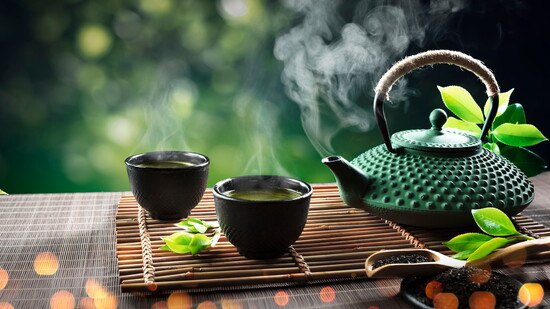For centuries, Chinese herbs and teas have been central to wellness practices in China and other parts of Asia, offering both preventive care and health remedies. Rooted in traditional Chinese medicine (TCM), these practices are gaining traction in the West as people seek natural ways to improve health and maintain balance.
Central to TCM is the belief that food and drink carry energetic qualities, classified as hot (yang) or cold (yin), that influence the body’s internal balance, says Dr. Ming Wu, of Wu Healing Center in West Hartford.
This hot-cold dynamic is not about temperature, Dr. Wu says, but about the effect a substance has on the body. Practitioners believe that an imbalance of these energies can contribute to illness, and that diet can help restore equilibrium.
“Hot” foods and herbs, such as ginger, cinnamon, and ginseng, are thought to stimulate circulation and warm the body, making them beneficial for conditions like fatigue, chills, or certain digestive issues, he says. “Cold” foods and herbs, including chrysanthemum flowers, peppermint, and mung beans, are believed to clear heat, reduce inflammation, and cool the body, making them useful in cases of fever, sore throat, or heat-related skin problems, he adds.
Teas are one of the most accessible ways for people to incorporate these concepts into daily life, Dr. Wu says. Green tea, widely consumed in China, is considered cooling and is valued for its antioxidant properties. Chrysanthemum tea, often served in the summer, is used to disperse internal heat and soothe the eyes. In contrast, pu-erh tea, a fermented black tea, is considered warming and is believed to aid digestion and boost energy after heavy meals.
Chinese herbal blends are often prescribed by licensed TCM practitioners. A person recovering from a cold with lingering fatigue might be recommended a warming tea blend of ginseng, red dates, and goji berries to replenish energy, Dr. Wu says.
The use of herbs and teas for health is not without caution. TCM emphasizes that the wrong balance of hot and cold foods can worsen symptoms. For instance, drinking too many cooling teas in a cold, damp climate could lead to sluggish digestion and fatigue, while excessive warming herbs in hot weather could contribute to dehydration or overheating.
In modern China, herbs and teas remain part of everyday health routines, Dr. Wu says, often used alongside conventional medicine. In the U.S. and Europe, their popularity is increasing, with specialty tea shops, herbal dispensaries, and integrative medicine clinics offering customized blends.
Many patients, he adds, are finding that changing their Western diet, which contain a lot of foods made with wheat, dairy and sugar, for a more traditional Chinese one can improve their well being.
“You can improve your health significantly when you change your diet to incorporate more traditional herbs, teas and foods into your diet.”
Common Chinese Teas and Their Properties
Cooling (Yin) Teas
- Green Tea – Antioxidant-rich, supports heart health, mildly cooling.
- Chrysanthemum Tea – Clears heat, soothes eyes, eases headaches.
- Peppermint Tea – Cools the body, aids digestion, relieves mild nausea.
- Honeysuckle Tea – Traditionally used for sore throats and fevers.
Warming (Yang) Teas
- Pu-erh Tea – Fermented, aids digestion, helps break down fats.
- Ginger Tea – Warms the body, supports immunity, eases cold symptoms.
- Cinnamon Twig Tea – Promotes warmth, circulation, alleviates chills.
- Red Date & Goji Berry Tea – Nourishes blood, boosts energy, supports recovery.
Neutral or Balancing Teas
- Oolong Tea – Semi-fermented, mildly warming and balanced
- Jasmine Tea – Floral, mildly cooling, but gentle enough for all seasons
